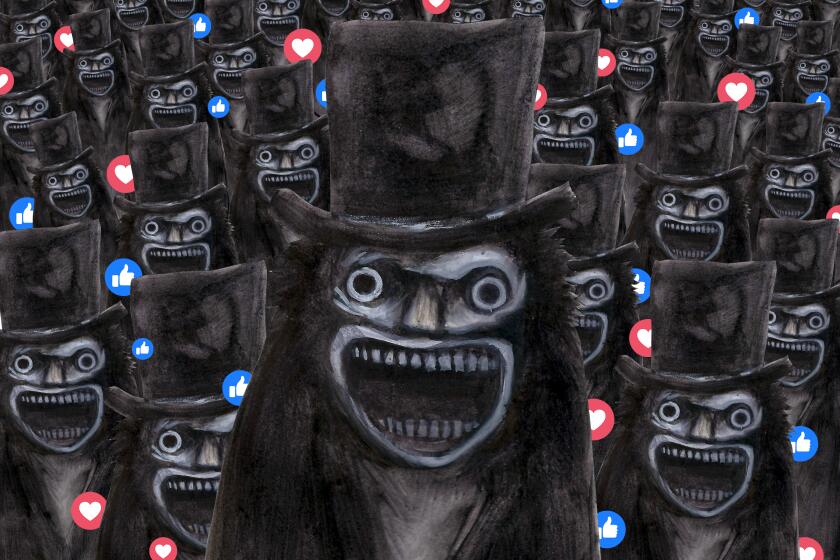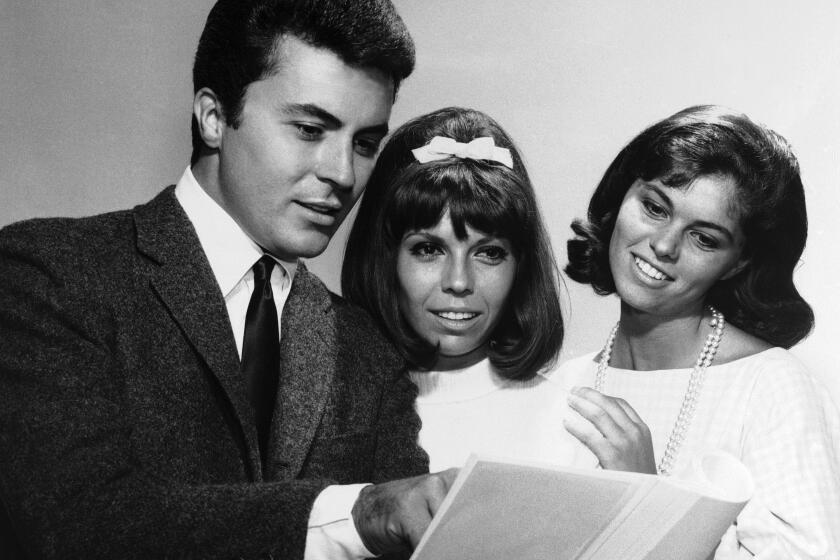‘Dillinger Is Dead’ makes a political statement
Marco Ferreri, who died in 1997, was something of an odd man out among the Italian auteurs who made a global impression during the golden age of art cinema. Despite his attention-getting knack for provocation, he never quite crossed over to American audiences, and his reputation has fallen into eclipse over the years.
Ferreri had a lot in common with his more popular countrymen. Like Federico Fellini, he had a penchant for the absurd. Like Pier Paolo Pasolini, he reveled in transgression. Like Michelangelo Antonioni, he was compelled to address the creeping alienation of modern life. The problem, it would seem, is that he often did all those things at once, in films that could be abrasive and confrontational.
“Dillinger Is Dead,” a black-comic oddity from 1969 starring the great Michel Piccoli, has a reputation as one of Ferreri’s most incendiary political statements. Even so, it remained unreleased in the United States until last year, when, thanks to Janus Films, a restored print sneaked into a few theaters. It arrives on DVD this week from the Criterion Collection.
Some have noted that “Dillinger” is a male -- or, one might even say, misogynist -- precursor of Chantal Akerman’s ‘70s feminist classic “Jeanne Dielman, 23 Quai du Commerce, 1080 Bruxelles,” (which Criterion released last year). Both films closely observe their opaque central characters as they go about their meticulous domestic routines. Both end with shocking acts of violence -- shocking not necessarily because we don’t see them coming but because they lack obvious motivations.
“Dillinger” centers on a man, played by Piccoli and identified in the credits as Glauco, who designs gas masks. The film opens by bluntly spelling out its thesis: At his workplace, Glauco listens to a colleague reciting from an essay that compares the isolation gas chamber to “the condition in which modern man lives” before going on to introduce the concept of “one-dimensional man,” popularized by the philosopher Herbert Marcuse a few years before the film was made.
The rest of the film amounts to a demonstration of Marcuse’s ideas about the consumerist conformity of modern man. Glauco returns to his chicly furnished home where his pill-popping wife (Anita Pallenberg) alternates between sleeping and drowsily ogling the goldfish on the bedside table. With talk shows blaring from the television and the radio piping in loungey jazz-pop, Glauco sets about fixing an elaborate meal. (Ferreri would take food metaphors to a grotesque extreme in one of his most notorious films, 1973’s “La Grande Bouffe,” about four men who eat themselves to death.)
Rummaging about in his closet, Glauco finds a gun wrapped in newspapers bearing headlines about John Dillinger’s death. He lavishes as much attention on the gun as on his meal: dismantling it and lubricating it in a bowl of olive oil, painting it red with white polka dots.
Suffice to say “Dillinger Is Dead” obeys that Chekhovian chestnut about the gun that appears in the first act being used in the third. But before that, we spend much of the movie watching Glauco putter about his pad, late into the night (he seems either to be suffering from insomnia or to have slipped into some kind of trance state). He cuddles with his wife, prodding her with a toy snake. He flirts with the maid (Annie Girardot), offers her a watermelon and drips some honey down her back.
In what is meant to register as a comment on sensory overstimulation -- a critique that plays as more than a little quaint from our media-saturated vantage point -- Glauco also projects some banal home movies on the wall and furiously interacts with them, the one-dimensional man inserting himself into the one-dimensional image.
The accompanying booklet includes excerpts from two interviews with Ferreri, one from the time of the release, the other from a decade later. In the first interview, he already seems aware of the seeming futility of making an oppositional film: “Even provocation is no use anymore, for it too is immediately digested, along with everything else.” (In the second, even more disillusioned about the state of things, he refuses to talk about the film or politics.)
Ferreri’s concerns were valid, it turns out. Present-day viewers of “Dillinger Is Dead” are likely to respond less to its overly literal satire than to its riot of colors, its Pop Art flair, its modernist design. In other words, a furious attack on capitalist society lives on, ironically, as a consumer fetish object.
More to Read
Only good movies
Get the Indie Focus newsletter, Mark Olsen's weekly guide to the world of cinema.
You may occasionally receive promotional content from the Los Angeles Times.








